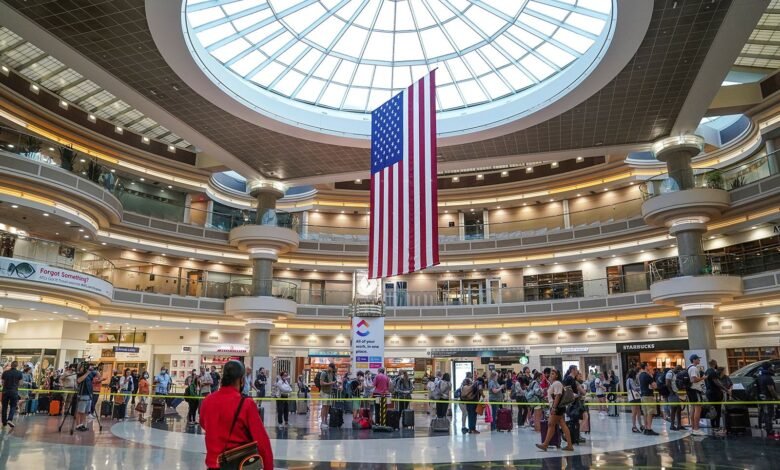The Busiest Airports in the World: Hubs of Global Connectivity

In the intricate web of global transportation, airports stand as pivotal nodes, facilitating not just the movement of people but also the exchange of goods, cultures, and ideas. The busiest airports in the world epitomize this role, showcasing the marvel of modern aviation and its capacity to shrink our vast planet into a closely knit community. This article delves into the dynamics of these bustling hubs, exploring the factors that contribute to their status, the challenges they face, and the future of air travel as it continues to evolve.
The Titans of Air Traffic
At the heart of air travel are the airports that manage staggering numbers of passengers and flights year after year. Leading the pack is Hartsfield-Jackson Atlanta International Airport, renowned for its strategic location and efficient operations. Serving as a primary hub for domestic and international flights, it exemplifies how logistical prowess and geographic advantage combine to facilitate seamless global connectivity.
Following closely is Beijing Capital International Airport, a key player in connecting the East with the West. Its growth mirrors China’s economic ascent and the increasing desire for air travel among its populace. Similarly, Dubai International Airport stands as a testament to visionary infrastructure investment, connecting the Eastern and Western hemispheres with its state-of-the-art facilities and strategic location.
The Engines Behind the Scenes
The efficiency and capacity of these airports hinge on several critical factors. Infrastructure, from runways to terminals, plays a foundational role in accommodating the sheer volume of passengers and flights. Advanced technology, including AI-driven traffic management and automated baggage systems, further enhances operational efficiency, ensuring that these airports can handle their heavy loads with remarkable precision.
Another key component is the strategic location that serves as a crossroads for international routes. Airports like Dubai International have capitalized on their geographical positions to become essential stopovers for long-haul flights, linking diverse continents with unprecedented ease.
Navigating Challenges
However, being at the forefront of global air traffic comes with its own set of challenges. Congestion and delays can tarnish the reputation of even the most well-managed airports, necessitating constant innovation in traffic management and infrastructure expansion. Environmental concerns also loom large, with the aviation industry under increasing pressure to reduce its carbon footprint and embrace sustainable practices.
Security remains a paramount concern, as the high volume of passengers necessitates rigorous and efficient screening processes. The busiest airports lead the way in deploying cutting-edge security technologies, from biometric identification to sophisticated scanning equipment, balancing the imperatives of safety and convenience.
The Future of Flight
Looking ahead, the landscape of air travel continues to evolve, shaped by technological advancements, environmental considerations, and changing passenger expectations. The busiest airports are at the forefront of this transformation, embracing innovations such as contactless technology, green energy sources, and enhanced passenger experiences. These initiatives not only aim to streamline operations but also to make air travel more sustainable and enjoyable.
The rise of new economic powers and shifting travel patterns may also redefine the hierarchy of the busiest airports. Investment in infrastructure, adaptability to emerging trends, and commitment to sustainability will be key factors in maintaining and achieving top status in the competitive arena of global air travel.
Conclusion
The busiest airports in the world are much more than mere points of departure and arrival; they are dynamic ecosystems that reflect the complexities and aspirations of the modern age. As they navigate the challenges of growth, sustainability, and technological integration, these airports continue to play a crucial role in knitting the fabric of global society tighter together. In doing so, they not only facilitate the physical movement of millions but also embody the spirit of exploration and connection that has always driven humanity to soar beyond the horizon.
Frequently Asked Questions (FAQs)
Which airport is considered the busiest in the world?
As of my last update, Hartsfield-Jackson Atlanta International Airport in the United States has consistently been ranked as the busiest airport by passenger numbers. However, rankings can vary based on the specific criteria used, such as international passenger traffic, in which case other airports like Dubai International have led in certain years.
How do airports handle such high volumes of traffic?
Busy airports deploy a range of strategies to manage high traffic volumes efficiently. These include advanced air traffic control technologies, multiple runways to handle simultaneous takeoffs and landings, sophisticated baggage handling systems, and extensive terminal facilities to accommodate passengers comfortably. Strategic scheduling and route management also play crucial roles.
What challenges do the busiest airports face?
The primary challenges include managing congestion, minimizing delays, enhancing security without compromising passenger convenience, and addressing environmental impacts. Additionally, they must continually upgrade infrastructure to keep pace with growing demand and evolving safety standards.




